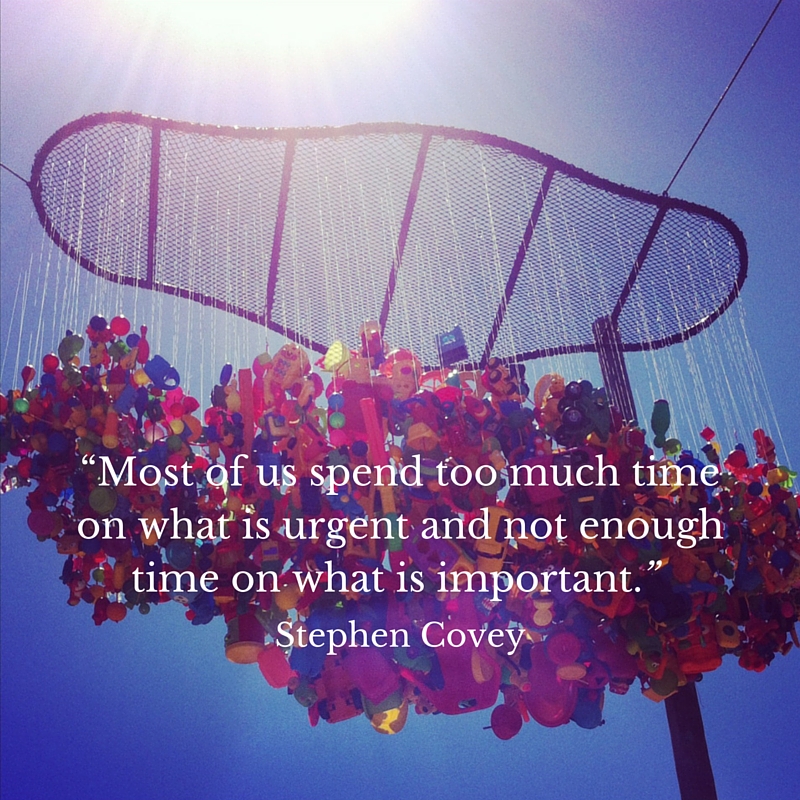There is something very gratifying about checking off an item on your to-do list. It gives you a sense of achievement, and sometimes a relief especially if the task is long past due.
Everyone has their preference on what type of to-do list works best for them. Using an app, writing them down in a portable notebook, sticking a list on the fridge, or making a list on a white board.
I personally prefer a paper to-do list for my own tasks. My husband and I use the app Wunderlist on our phones for shared tasks such as grocery shopping, bills and chores for the home so that we know when the other person has taken care of the things on the list.
While making a list can have its advantages and help us feel more in control and less stressed out, it can also be overwhelming if it’s long and we do not know which items to check off first.
The time management tool from Stephen Covey, the author of The Seven Habits of Highly Effective People, is great for helping you prioritize the things you need to do.
In Covey’s time management tool, he labels each task as “important” or “not important”, in combination with “urgent” or “not urgent”. You will land up with four quadrants as per below.

Quadrant 1 – Important and Urgent (Action: Manage the Necessity)
These tasks have to be done or there will be negative consequences. It is inevitable that there will be tasks in this quadrant. You don’t want to find yourself spending too much time fire fighting in this quadrant.
Quadrant 2 – Important and Not Urgent (Action: Focus on Personal Goals)
This is the quadrant that you want to invest most of your time. Things in this quadrant are aligned with your goals eg exercising, building a relationship, planning and learning something new. They are things that you want to achieve in the long run and tend to be put off as not urgent.
Quadrant 3 – Not important and Urgent (Action: Avoid the Deception)
This is a quadrant to take note of tasks that are mistaken as urgent and should be moved to quadrant four. For example, constantly checking your emails and social media updates. Sometimes the deadline is imposed by others and there is a deception that the task is urgent. The key is to be able to identify them, and learn to push back or delegate.
Quadrant 4: Not Important and Not Urgent (Action: Limit Escapism)
These are the things that you want to limit as much as possible. They include sitting in front of the TV flipping channels, playing computer games, or surfing the Internet mindlessly on your devices. If you can identify the activities in this quadrant, you will be able to free up time for tasks in quadrant two that align with your goals. It is important to note that this quadrant is also where down time falls into. It is important to strike a balance in allocating most of your time in quadrant two with some spare time for things in this quadrant that allow you to take a break.
Ideally, you will want to work on things in quadrant one (necessity) to get by, while you use remaining time in quadrant two (personal goals), and you will also need a bit of time in quadrant four (escapism) as part of your downtime.
Plan your to-do list according to this matrix before you take action. It will help you to prioritize what’s most important and eliminate deceptive urgent tasks!


